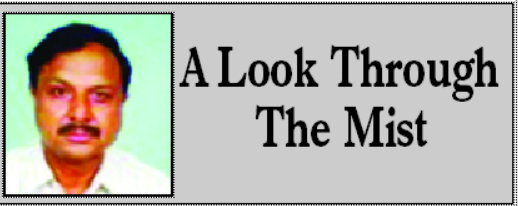Is not the Duty of President of India to preserve, protect & defend Constitution with in Basic Structure?
42nd & 44th Constitutional amendments w.r.t. Art-74 need Judicial review w.r.t Basic Structure of COI

DAYA SAGAR
The Constitution of India has the distinction of being the first (rather only) very detailed & voluminous written document adopted by people of a country aspiring to live in a democratic system of governance comprising of very heterogonous mass of religions / /traditions / geographical identities / economic diversities / social and linguistic regions but well knit with ‘yarns’ of humanitarian culture & traditions of times immemorial who had just come out of ‘foreign rule’ (after having been governed by the foreigners for about two centuries) and who still had many Princes of princely states (monarchs) left around by retreating British with the impressions that rulers of Princely states outside the erstwhile British India could take them as sovereign identities outside the ‘dominion’ even on 15th August 1947.
Those entrusted with the task of drafting the constitution of India i.e Bharat were in principle desirous of giving to their self not only a well meaning parliamentary system of democracy suiting all the diversities & needs of Indian people {which could be well inferred from the spirits underlying the Preamble of the first ( 1949) edition of The Constitution of Democratic Republic of India, the fundamental rights granted to Citizens of Democratic Republic of India Republic Democratic ( Article -11 to Art-35 ) and the Directive Principles laid in Democratic Republic of India ( Article-36 to Art-51 ) } but also wanted to provide checks & balances / safeguards for ensuring that the elected governments always work within the provisions of Constitution and at no time even any Parliament could amend the constitution to ‘conservative’ democratic system / ‘autocratic” system / or the Executive could misuse the ‘authority’ for which the ‘institution’ of Judiciary for judicial review of actions of executive as well as legislature elected/installed for a particular term, 5 years max ,{ see Art-13 < Laws inconsistent with or in derogation of the fundamental rights>, Art32 < Remedies for enforcement of rights conferred by Part -III of COI , Art-124 of Part-V Chapter -IV THE UNION JUDICIARY < Art 124. Establishment and constitution of Supreme Court.-< (1) There shall be a Supreme Court of India ….. > , Art-129< Supreme Court shall be a court of record and shall have all the powers of such a court including the power to punish for contempt of itself>, Art-131 <. Original jurisdiction of the Supreme Court >, Art -220 < Restriction on practice after being a permanent Judge >,Art 143 <. Power of President to consult Supreme Court>, Art 147.< Interpretation> } and ‘institution of President of India ( also as part of Parliament . Before 42nd and 44rth Amendment Acts of 1976 & 1978 the President of India as preserver, protector & defender of Constitution was not supposed to necessarily go by the advice of council of ministers, (c) Art-77 which says All executive action of the Government of India shall be expressed to be taken in the name of the President, (d) Art Article -79 which says There shall be a Parliament for the Union which shall consist of the President and two Houses to be known respectively as the Council of States and the House of the People and the like provisions.
After amendments in Art-74 in 1976 & 1978 the President of India has to necessarily go by the advice of council pf Ministers, rather has to work only according to the advice of the Council of Ministers. So the questions are (1) can the President of India with the amended Art-74 ultimately hold to the oath taken under Art- 60 of the Constitution of India ? (2) Is not the institution of President as part of Parliament ( Art 79 ) & preserver plus protector plus defender of Constitution a very intrinsic element of the Basic Structure of Constitution of India ? (3) Should not amendments made to Art 74 by 42nd & 44rth Constitution amendment Acts of 1976 & Act of 1978 be held void being against the basic structure of the Constitution ? (4 ) The 13 Judge – Bench ( Chief Justice S. M. Sikri ) Judgment of Supreme Court of India delivered on 24th April 1973 in Kesavananda Bharati Vs State of Kerala ( His Holiness Kesavananda Bharati Sripadagalavaru etc. v. State of Kerala and another etc. Writ Petitions Nos.135/70, 351-52i~73-74) had held that Parliament has powers to amend the Constitution using Art- 368 but the Parliament cannot go beyond disturbing the basic structure of the Constitution of India and amendments made to constitution are subject to judicial review , so are not the amendments made to Art- 74 against the basic structure of COI & hence must be taken under Judicial review by supreme court of India without delay ?
The Supreme Court, in a historic 7:6 majority decision, propounded the basic structure doctrine of the Constitution, which holds that certain fundamental features of the Constitution, such as democracy, secularism, federalism, like the rule of law, cannot be amended by parliament using Art- 368 . Not only that The court also held that the power of judicial review is an integral part of the basic structure of the Constitution, and cannot be taken away by Parliament through constitutional amendments. And ‘so’ to me is the status of President of India as preserver, protector and defender of Constitution. No doubt what falls in the arena of Basic Structure of COI has to be decided by Supreme Court of India.
(The author is a Sr Journalist & analyst of J&K Affairs).
